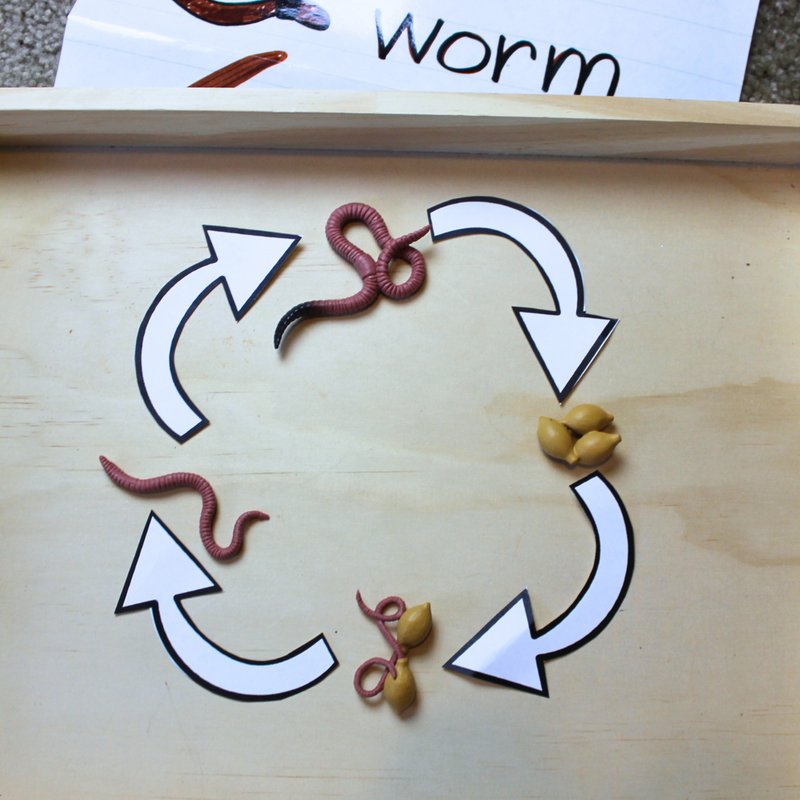
Wolf worms, also known as **larvae of the cuterebra fly**, live in a unique world, primarily affecting small mammals. They’re like tiny explorers, moving through different stages of life in ways that can surprise even seasoned biologists. If you’re considering a field study to document their life cycle, you’re in for an engaging journey that combines science, nature, and a bit of adventure. So grab your notebook and let’s dive into this intriguing life cycle!
Understanding the Wolf Worm Life Cycle
The life cycle of a wolf worm is typically divided into four main stages: eggs, larvae, pupae, and adults. Each stage has its characteristics and behaviors that are crucial to understanding their overall life strategy.
1. **Egg Stage**: The female cuterebra fly lays her eggs on the ground or near small mammal burrows. Picture a laid-back summer day, and suddenly, tiny eggs hatch into larvae ready to find their first host. This initial stage is critical because it sets the tone for the worm’s life ahead. The eggs can be tricky to spot, and that’s why careful observation is key when documenting this stage.
2. **Larval Stage**: After hatching, the larvae burrow into the host’s skin and begin their development. This stage can last several weeks. Think of them as tiny ninjas slipping into a fortress. During this time, they feed on the host’s tissues while growing quickly. It’s both fascinating and a bit gruesome to observe how they adapt and thrive within their host, making detailed notes during this period essential for your study.
3. **Pupae Stage**: Once they’ve grown sufficiently, the larvae exit the host and develop into pupae in the soil. This stage is like a transformation—akin to the caterpillar turning into a butterfly. The pupae is a quiet phase where they undergo major changes. It’s crucial to document the environmental conditions here, as temperature and soil type can influence how long this stage lasts.
4. **Adult Stage**: Finally, the pupae emerge as adult flies, ready to start the cycle again. The transformation is astounding; from a small larva to a flying insect capable of laying her eggs. Observing their mating rituals and understanding their role in the ecosystem can conclude your study on an exciting note.
Why Documenting Their Life Cycle Matters
You might be wondering why it’s essential to study the life cycle of wolf worms. Understanding their lifecycle provides insight into their ecological role and helps monitor the health of populations of small mammals. Here are a few reasons why this documentation is significant:
– **Ecosystem Health**: Wolf worms are indicators of ecosystem health. By studying them, researchers can gauge the effectiveness of conservation efforts for their host species. If populations decline, it might signal underlying environmental issues.
– **Host Impact**: Understanding how wolf worms affect their hosts, like rodents, helps in wildlife management. An abundance of wolf worms might lead to higher mortality rates in small mammals, impacting predator-prey dynamics.
– **Research and Education**: Your documentation can serve as a valuable resource for other researchers and students interested in parasitology and wildlife biology. It contributes to a broader understanding of biodiversity and the interconnectedness of life.
– **Conservation Efforts**: This knowledge can inform conservation strategies aimed at maintaining both predator and prey populations, ensuring a balanced ecosystem.
Tools and Techniques for Field Study
To effectively document the wolf worm life cycle, you’ll need some basic tools and techniques. Here’s a quick rundown of what you may need:
- Field Notebook: Essential for jotting down observations, dates, and any unusual findings.
- Camera: Use it to capture images of worms and their environments for your records.
- Hand Lens: Useful for getting a closer look at eggs and larvae.
- Collection Vials: Perfect for safely collecting specimens for observation.
- GPS Device: Helps in accurately documenting locations of your findings.
When out in the field, it’s important to be patient and observant. Set up observation points and return to them regularly to track changes. You might even consider creating a timeline to help visualize the lifecycle phases and their timing.
Challenges in Documenting Wolf Worms
Honestly, documenting wolf worms can come with its challenges. Here are a few you might encounter:
– **Camouflage**: Wolf worms blend into their surroundings, making them hard to spot. You’ll need keen eyes and patience to find them.
– **Environmental Variability**: Weather conditions can affect the growth and development of both the worms and their hosts. For example, a wet season might lead to more abundant hosts, which in turn affects wolf worm populations.
– **Ethical Considerations**: Always consider the impact of your study on the surrounding wildlife. Ensure that your collection methods are humane and follow any local regulations regarding wildlife research.
Being aware of these challenges can help you prepare better and adapt your approach as needed.
Collaborating with Experts
If you’re new to field studies, it can be a real boon to collaborate with experts or join a research group. They can provide valuable insights, mentorship, and resources to enhance your study. Here’s how you can make the most of it:
– **Join Local Research Initiatives**: Many universities and organizations conduct research on wildlife. Collaborating with these groups can provide you with access to resources and equipment.
– **Attend Workshops and Seminars**: Engaging with experts at workshops can deepen your understanding of wolf worm biology and field techniques. It’s also a great way to build a network of fellow enthusiasts.
– **Seek Advice**: Don’t hesitate to reach out to local wildlife organizations or academic institutions. Many researchers are happy to share their knowledge and may even guide you through your field study.
Documenting Your Findings
After your field study, it’s time to put everything together. Proper documentation of your findings is key. Here’s how to approach it:
1. **Organize Your Data**: Collect all your notes, photographs, and specimens systematically. Organizing them can help you see patterns and trends more clearly.
2. **Create a Report**: Write a detailed report including your observations, methods, challenges faced, and any significant findings. This can serve as a valuable reference for future studies.
3. **Share Your Work**: Consider sharing your findings through local wildlife organizations or online forums. This can help raise awareness about wolf worms and their ecological significance.
4. **Reflect on Your Experience**: Take a moment to think about what you’ve learned during this study. Reflecting can bring new insights and improve your future fieldwork.
As you document the wolf worm life cycle, remember that every observation adds to the understanding of these unique creatures and their role in our world.
In the end, studying the wolf worm life cycle isn’t just about science; it’s about connecting with nature and contributing to a greater understanding of biodiversity. So, whether you’re out in the field or back home organizing your notes, know that your efforts are part of a larger picture in wildlife research. Happy documenting!

